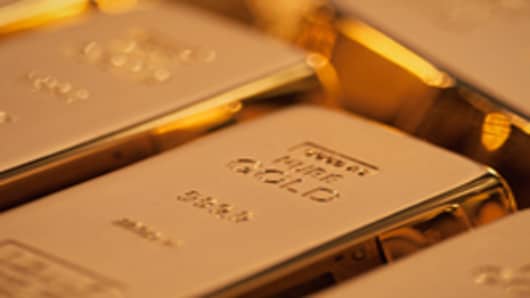Major players, including George Soros, are reportedly pulling back from gold and silver has recorded yet another collapse.
The Federal Reserve remains dovish, the US macroeconomic picture looks shaky, but gold has still fallen back, so should investors stick with precious metals?
The Wall Street Journal reported on Thursday morning that George Soros’ eponymous fund has been easing itself out of the yellow metal and is also getting out of silver .
Gold has risen more than 10 percent since January 2011 and now sits at over $1,500. It hit record highs of more than $1,575 on Monday but was trimmed back Tuesday and Wednesday to just under $1,538.
Monday’s rally was probably an overshoot, Credit Suisse analyst Tom Kendall told CNBC.com.
“We’re really back to levels of gold from last week before it got a bit frothy,” he said.
The Federal Reserve said on Wednesday that inflation was under control, reducing upwards pressure on gold. Investors typically buy into the metal as a hedge against inflation.
The dollar is also under pressure on weak growth in US private payrolls and a corresponding concern over the April jobs report, due to be released on Friday.
The currency is at two and a half year lows. The Mexican government bought $4 billion worth of bullion between January and March as it looks to reduce its dollar reserves.
The euro remains at unprecedented highs against the dollar. The European Central Bank raised interest rates by a quarter of a percentage point to 1.25 percent last month and may do so again, according to analysts.
Despite the fundamentals, gold could continue to be choppy for the next couple of weeks, Kendall added.
VTB Capital analyst Andrey Kryuchenkov told CNBC.com that the weakness in the dollar and the continuation of a dovish stance at the Fed should mean that gold’s retreat should be contained.
While there has been some easing in the geopolitical situation, “the macro data has been very weak,” he said. “I think all of this supports the longer term uptrend in gold.”
What About Silver?
Silver has been volatile over the past two weeks, flirting with $50 an ounce before collapsing and rebounding. The metal lost 20 percent in three days after booking a record high on Thursday as investors took profits.
The Chicago Mercantile Exchange also hiked silver futures margins twice more as it attempts to control volatility in the metal, pricing some smaller traders out of the market. Since April 25 the exchange’s margin requirements have increased from $8,700 per contract to $14,000, rising to $16,000 on Monday May 9.
“The margin issue has played a key role in this, it’s really driven a lot of the shorter-term long positions out of silver, which compared to gold were a bit overboard anyway,” Kendall said.
Silver is also used as an inflation hedge, but its rise has been underpinned by industrial demand and by investors looking to benefit from its strong performance. With the growth in exchange-traded funds and speculative interest in the metal, investment as a component of silver purchasing grew from 5 to 17 percent from 2008 to 2010, according to research from RBC Capital Markets.
“Silver was an accident waiting to happen,” VTB’s Kryuchenkov said. The correction was logical, given the extent of the overshoot on the metal’s pricing. Silver’s fall below $40 wiped out a month of solid gains."
Analysts told CNBC that there is now strong support at around $36.
Earlier on Thursday, leading commodity investor Jim Rogers told CNBC that silver’s rise was unsustainable and that a pull-back could be good for the market.
Credit Suisse’s Kendall agreed, saying that the correction is likely to continue. “I wouldn’t be calling the bottom just yet,” he said.


